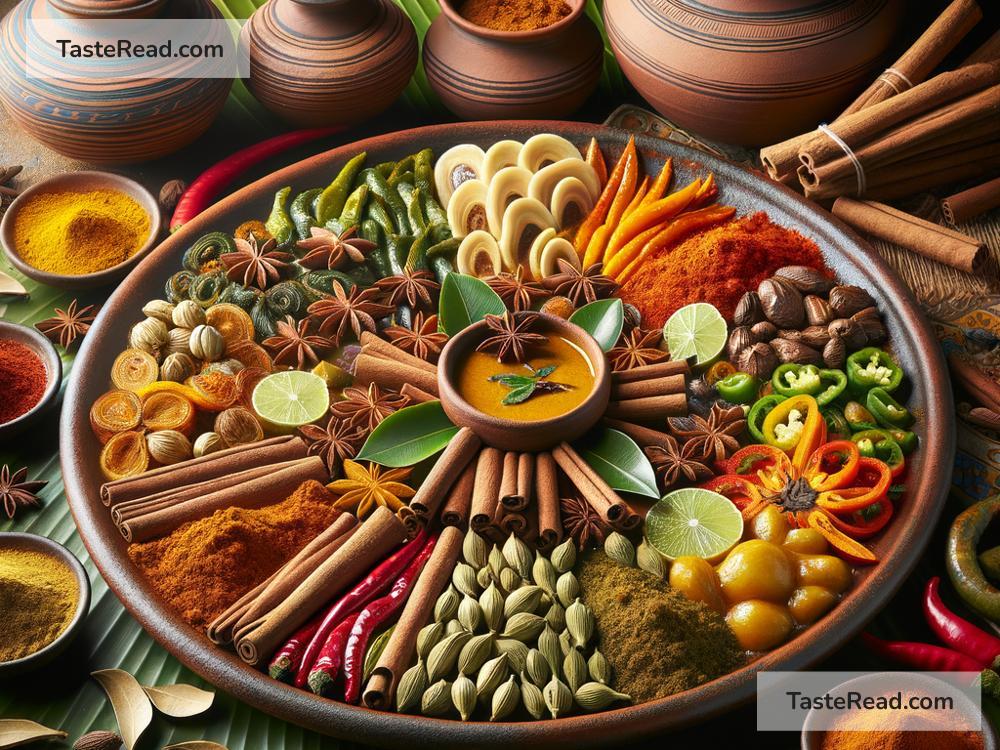Spices & Their Influence on Sri Lankan Curries
Sri Lanka, famously known as the “Pearl of the Indian Ocean,” is a small island with a big reputation for its flavorful food. The cuisine of this tropical paradise is vibrant, aromatic, and deeply rooted in its culture. A key reason for its distinctive taste is the generous use of spices, especially in one of its most loved dishes: curries. Sri Lankan curries are rich, colorful, and bursting with flavor, thanks to the magical contribution of spices. Let’s dive into how these ingredients shape the soul of Sri Lankan curries.
Spices: A Cornerstone of Sri Lankan Cooking
Sri Lanka has a long history with spices. Known as one of the world’s biggest spice producers, the island was historically famous for its cinnamon, nutmeg, cloves, and pepper. For centuries, traders from Europe, the Middle East, and Asia came to Sri Lanka to get their hands on these valuable spices. With such a heritage, it’s no surprise that Sri Lankan cuisine revolves around the intelligent and creative use of spices.
When locals cook curries, it’s not just about taste—it’s also about texture, aroma, and even appearance. Spices help bring these elements together, turning simple ingredients like vegetables, meats, and fish into incredibly flavorful dishes.
Essential Spices in Sri Lankan Curries
Sri Lankan curries vary from region to region, but their foundation is built on a handful of key spices. Here are the essential spices that are the heroes in creating their unmistakable flavors:
-
Cinnamon
Sri Lanka produces some of the best cinnamon in the world. This sweet and aromatic spice adds depth to meat curries like chicken and pork. A stick of cinnamon not only enhances the taste but also infuses the dish with a warm fragrance. -
Cardamom
Cardamom pods bring a subtle, sweet, and slightly minty flavor to curries. They are often used in coconut milk-based dishes, adding a refreshing undertone that balances the richness of the curry. -
Cloves
Known for their bold, pungent flavor, cloves are indispensable in Sri Lankan curries. They add layers of complexity, making meat-based curries taste robust and deeply aromatic. -
Coriander Seeds
Coriander seeds, either whole or ground, impart an earthy and citrusy flavor to curries. They are a staple in spice blends like curry powder. -
Cumin
Cumin seeds are small but incredibly powerful. They have a smoky, nutty taste that enhances both vegetarian and non-vegetarian curries. When roasted lightly before grinding, they gain an intense flavor. -
Fenugreek
Fenugreek seeds play a special role in seafood curries and dals. Their slightly bitter taste adds contrast to the natural sweetness of coconut milk and seafood. -
Turmeric
Turmeric is what gives curries their bold yellow color. Besides its health benefits, it also has a mild, earthy flavor that ties other spices together. Turmeric is especially important in fish curries. -
Mustard Seeds
Mustard seeds are often fried in oil at the start of the cooking process, releasing a slightly spicy and nutty aroma. They are commonly used in vegetarian curries like eggplant and potato dishes. -
Chili
Sri Lankan food is known for its spiciness, and chili powder or flakes take the heat to the next level! Whether it’s red chili or green chili, they are used in curries to give that fiery kick that Sri Lanka is famous for. -
Pandan (Rampe) and Curry Leaves
Though technically not spices, these aromatic leaves are foundational to Sri Lankan cuisine. They are added at the beginning of cooking to infuse curries with a fresh, herbal fragrance.
The Art of Mixing Spices
One of the most fascinating things about Sri Lankan curry is how spices are combined. Every curry has a unique spice blend, depending on the type of dish and the cook’s personal taste. These blends are often prepared fresh, ensuring maximum flavor and aroma. For example, “roasted curry powder” is a common spice mix made by toasting spices like coriander, cumin, and fennel before grinding them into powder. This gives a smoky flavor perfect for meat curries.
Sri Lankan cooking also uses coconut milk in many curries, which adds richness and helps balance the heat of the spices. The interplay between the creamy sweetness of coconut milk and the bold zest of spices is what makes Sri Lankan curries so memorable.
Spices Beyond Flavor
In Sri Lankan culture, spices aren’t just for taste—they are often valued for their health benefits. Turmeric is praised for its anti-inflammatory properties, while cumin helps digestion. Fenugreek seeds are believed to regulate blood sugar levels, and cinnamon is revered for its ability to boost immunity. This makes Sri Lankan curries not only tasty but also beneficial for overall well-being.
Sri Lankan Curry: A Culinary Adventure
Whether it’s a coconut-rich Fish Ambul Thiyal, a fiery Chicken Curry, or a mild yet flavorful pumpkin curry, spices are at the heart of every Sri Lankan dish. They tell a story of tradition, creativity, and the island’s connection to nature. Every spoonful of curry is a celebration of flavor, with each spice playing its part in crafting the perfect harmony.
Next time you enjoy a Sri Lankan curry, take a moment to appreciate the spices that make it so special. You’re not just tasting food—you’re experiencing centuries of culinary expertise and cultural richness.


